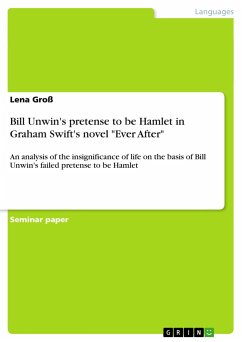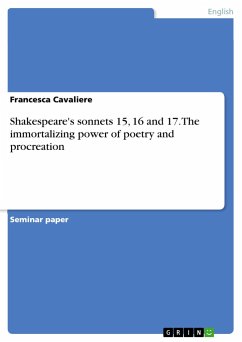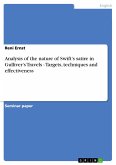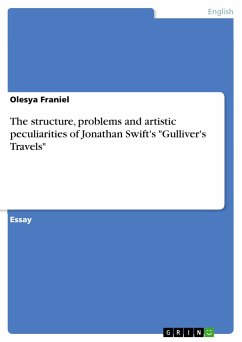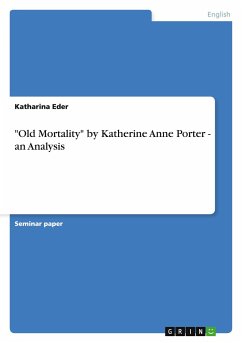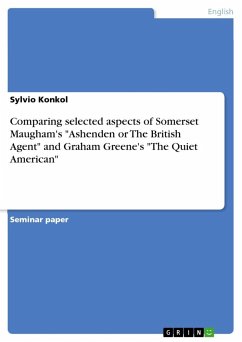Seminar paper from the year 2013 in the subject Didactics - English - Literature, Works, grade: 2,0, Johannes Gutenberg University Mainz, language: English, abstract: "I am who I am. I am Bill Unwin (there, I declare myself!). I am Hamlet the Dane" (Swift 173). This citation neatly covers what Graham Swift's novel Ever After is about; a no one identifies himself with a world-famous figure, namely William Shakespeare's Hamlet, to provide some structure and meaning to his irrelevant existence.Swift tries to picture the insignificance of life and therefore, focuses the story of this middle-aged desperate and childless widower Bill Unwin, who recently survived an attempted suicide. Searching for clues to understand his life, Unwin addresses themes such as love, loss, identity, mortality, and the ephemeral nature of life. In order to give his own existence a sense of meaning, Bill empathizes with Hamlet, but in the end the reader has to discoverthat these two characters have nothing in common and Unwin's emptiness of life is stressed. So, if you take all of Unwin's façade and shape away he tried to construct from Hamlet, no meaning to his life, rather nothing remains, thus, this novel is to show how meaningless and transient life actually is. Therefore, to illustrate this occurrence in this paper, first of all, shared character traits between Bill Unwin and Hamlet the Dane are listed to later on destroy the illusion of Bill being Hamlet by outlining the differences between these two figures. Following, the emptiness of Unwin's life is pointed out and reasons of creating the protagonist like this are specified. Finally, Swift's intention is reached as the overall insignificance of life becomes obvious.
Hinweis: Dieser Artikel kann nur an eine deutsche Lieferadresse ausgeliefert werden.
Hinweis: Dieser Artikel kann nur an eine deutsche Lieferadresse ausgeliefert werden.
